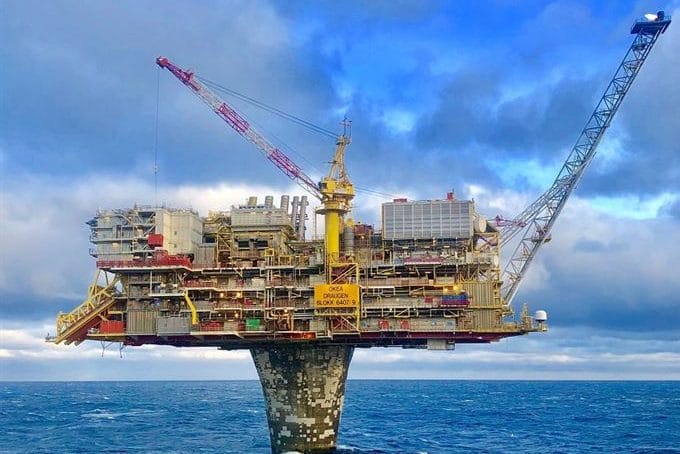Located about 65 km northeast of the Fenja field, Equinor (31%) and partners OKEA (40%), Harbour (20%) and Longboat (9%) have now spudded well 6407/9-13 targeting the Upper Jurassic Ginny and Middle Jurassic Hermine prospects.
Even though the well is operated by Equinor, it is of key importance to OKEA as the operator of the Draugen field situated just a few kilometres to the southeast.
‘’This is the first of three exploration wells we will be drilling the coming year, all focussed on near-field exploration near our Draugen and Gjøa producing fields.’’ says Andrew McCann, SVP Subsurface & Wells in OKEA in a press release issued today. “This type of exploration is core to OKEA’s strategy of identifying upside potential for our producing assets and a discovery in this area could be developed rapidly through use of existing infrastructure’’, Mr McCann added.
Partner Longboat, through a published company presentation, estimates that the gross mean volume of the Ginny prospect amounts to 41 MMboe, whilst the underlying Hermine prospect could yield 27 MMboe gross mean.

The cross-section above – also from a Longboat document – shows the two prospects, which are situated in between the Hasselmus discovery in the south and Galtvort in the north. It can be seen that in case of a discovery in Hermine, it is likely that Hermine and Galtvort form part of the same accumulation. As the Longboat document already describes, fault sealing – especially towards the Hasselmus structure – has been identified as a key risk.
The Upper Jurassic Ginny prospect bears similarities to the Neptune-operated Fenja field towards the southwest in the sense that it is situated in a comparable structural setting. As appraisal drilling on Fenja has however shown, the distribution and architecture of the sandstones shed from the Frøya High can be more complex than anticipated. Even though plenty of sands are being interpreted in the area of the prospect that is now being targeted, only drilling will ultimately proof how thick the reservoir unit in Ginny actually is.
HENK KOMBRINK




